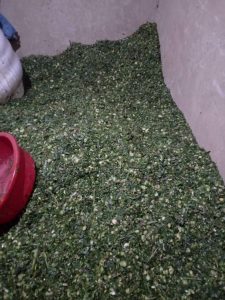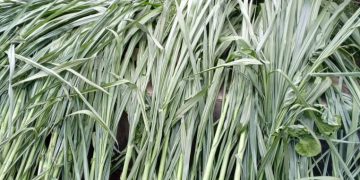By Our Reporter,
DAIRY FARMING
Dairy farming, a vital component of the agricultural landscape, relies heavily on quality forages for optimal milk production. Feed costs constitute 60% of farm expenses, with cows, particularly the Friesian breed, being significant feeders. One economical strategy for producing milk is growing forages on the farm.

Farmers in central and southern Uganda have invested substantially in forage production, yet many are not seeing the anticipated financial returns, struggling to break even. This is largely due to incorrect harvesting stages, resulting in compromised feed quality, which in turn affects dairy productivity.
Joan Atukunda, a dairy farm expert noted that Napier grass makes good forage but should ideally be harvested when it is between 60cm to 100cm tall. At this stage, the grass is low in fiber but high in protein and energy, making it more digestible for cows.
“Higher fiber content in overgrown Napier grass impedes digestion, reducing feed intake and increasing the cow’s energy expenditure on digestion,” Atukunda added.
Despite this, many farmers harvest Napier grass that exceeds 100cm, believing that mechanical chopping will make it digestible. This practice is flawed since cows cannot digest woody fiber, which ends up in the manure rather than providing nutritional benefits.

Maize, although expensive to produce due to its seasonal planting requirements, is indispensable for high-yield dairy cows producing over 20 liters of milk daily. These cows need additional energy, and maize silage, harvested at the dough stage when starch is at its peak in the kernels, meets this need. Unfortunately, premature harvesting of maize before the dough stage is common, leading to underutilized energy potential in the forage.
The key to high-quality forage lies in timely and appropriate harvesting, ensuring that cows receive the best possible nutrition to enhance milk production. Proper forage management not only boosts productivity but also helps farmers achieve better financial outcomes.








































